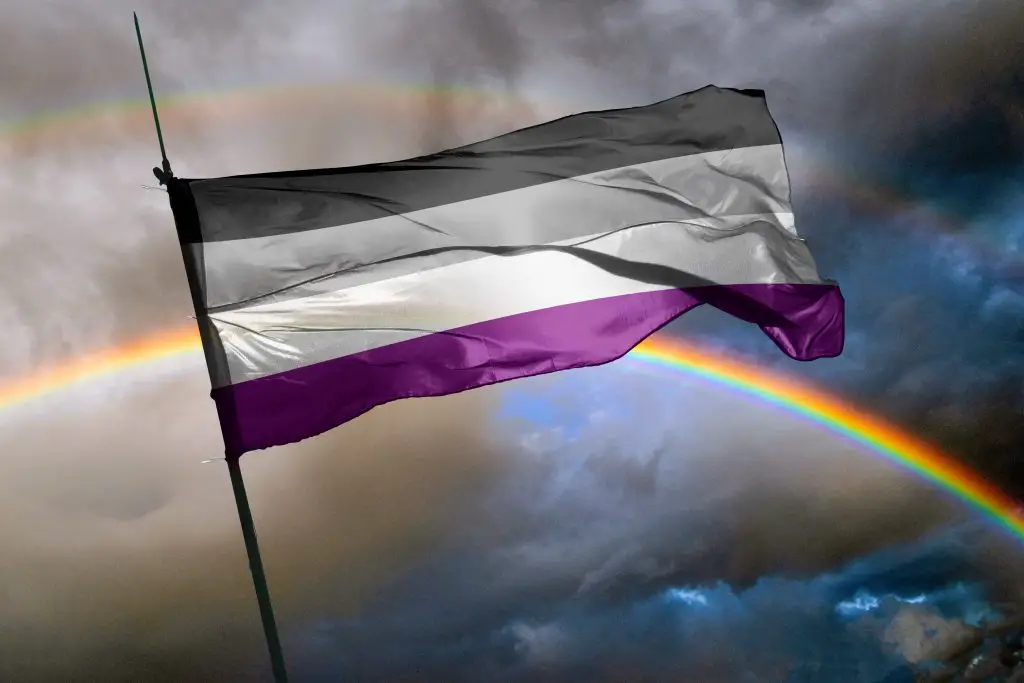
Credit: Adobe Stock
More People Than Ever Are Coming Out As Grays**ual – Here’s What It Means
More and more people are coming out as grays**ual, so here’s everything you need to know.
We’ve already covered symbios**uality, the TikTok star who came out as trigender, and the woman who discovered she was abros**ual after years of confusion.
In a world that often views s**uality in binary terms, many individuals find themselves existing outside of the heteronormative.
But grays**uality – sometimes spelled ‘greys**uality’ and also known as gray a, gray-A, gray-ace, or grey-ace – represents a nuanced identity that challenges traditional understanding of s**ual orientation.

Grays**uality describes individuals who experience attraction rarely, weakly, or under specific circumstances, per WebMD.
As the As**ual Visibility & Education Network explains, grays**ual people ‘identify with the area between as**uality and s**uality’ and may: “experience s**ual attraction very rarely, only under specific circumstances, or of an intensity so low that [it] is ignorable and not a necessity in relationships.”
Licensed marriage and family therapist Shadeen Francis, LMFT, CST, tells Men’s Health that people who identify as grays**ual may relate to statements like: “I feel like I experience attraction occasionally, but only in particular contexts” or :”Maybe I like certain kinds of activities, but I’m repulsed by or turned off by others.”
This identity exists as part of the broader as**ual spectrum, serving as a bridge (or a ‘gray area’) between those who rarely or never experience attraction and those who experience it regularly.
The three major types of as**uality provide context for understanding where grays**uality fits.
S**-repulsed, where individuals who are repulsed by or completely disinterested, s**-neutral, for those who aren’t repulsed but don’t actively seek it out, and s**-positive, people who identify as as**ual but still engage in s** for pleasure.
Grays**ual individuals may identify with any of these categories while experiencing occasional s**ual attraction.
Counselor Eric Marlowe Garrison emphasizes that these labels should provide freedom rather than restriction, noting that individuals need not identify with every single attribute associated with their chosen identity.

An important distinction exists between attraction and libido.
S**ual attraction involves finding specific individuals appealing and wanting to engage with them.
Libido, described by experts to Healthline as similar to ‘the need to scratch an itch,’ refers to the general desire for release and pleasure.
This concept of ‘mixed orientation’ or ‘cross orientation’ allows grays**ual individuals to identify with different romantic orientations such as biromantic, heteroromantic, homoromantic, or aromantic, depending on their romantic attractions.
Grays**ual individuals navigate relationships in diverse ways, challenging assumptions about the role of attraction in romantic partnerships.
Many grays**ual people desire and maintain fulfilling romantic relationships, whether with other grays**ual individuals or with allos**ual partners.
Francis emphasizes the importance of communication in these relationships, suggesting that partners discuss ‘how you both feel, what you both like and don’t like, and what you both want to do – or not do.’
She recommends seeking partners who are ‘patient, communicative, curious, and respectful of boundaries.’
For some grays**ual individuals, s** may hold little importance in relationships.

The grays**ual community has grown significantly since the term’s origins. According to the 2019 Ace Community Census, gray-as**uals comprised approximately 10% of as**ual spectrum respondents, making it the second most common ace identity after as**uality itself.
The community has developed its own symbols and representations. Gray-as**uals are represented by the gray stripe in the as**ual community flag, created collaboratively in 2010.
A specific flag for grays**uality features purple representing as**uality, white representing allos**uality, and gray representing the transition between these identities.
Those seeking support can find resources through organizations like the As**ual Visibility and Education Network (AVEN), online forums, local LGBTQA+ community centers, and qualified therapists with training in s**uality.
Related Article: Reason So Many Straight Men Cheat On Their Wives With Other Men
Related Article: Conjoined Twins With Totally Different S**ualities Answer The Questions Everyone’s Always Wanted To Ask
Want more stuff like this?
Get the best viral stories straight into your inbox!


